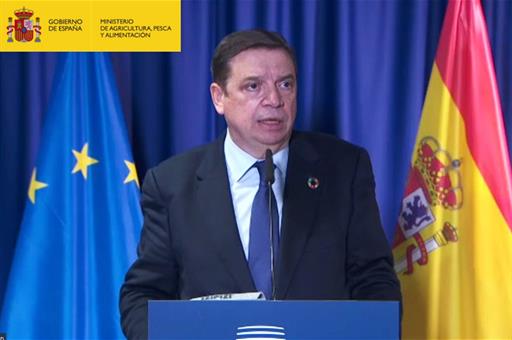The proposed reductions in catches will have limited effects on Spanish fishing, which will continue to enjoy quotas adapted to its needs.
Luis Planas also highlighted that species of great interest to Spain have been left out of the fishing agreement, such as the southern stocks of mackerel, horse mackerel and blue whiting. And the Spanish fleet has achieved some benefits in northern hake - the main species that Spanish vessels fish for in the area.
Through this agreement, the United Kingdom recovers sovereignty over its waters and control of its fishing resources, although a transition period of five and a half years has been established (until 30 June 2026) for the sector to adapt gradually and in a balanced fashion to the new situation, without interrupting its activity.
Benefits in species of interest to the Spanish fleet
The United Kingdom has obtained an increase in its fishing quotas which, at the end of the transition period in 2026, will amount to 25% of the average value of the catches by EU countries in British waters. To achieve this value, the percentage reduction in the volume of catches of the different shared species is different. There will be a reduction, at the end of the five and a half-year period, of barely 1% in the case of northern hake, a species of great interest to Spain, and there even some species that have been left out of the agreement.
Accordingly, the quotas of the southern stocks, with such important species as mackerel, horse mackerel and blue whiting for the activity of the Spanish fleet, primarily through inshore fishing, will not suffer any alterations and the fishing possibilities will be maintained for the Spanish fleet.
Nor have any concessions of deep water species been made, such as bream, alfonsinos, black scabbardfish and grenadiers.
As regards other species of great interest for the Spanish fleet (hake, anglerfish and megrim), the key to the distribution established covers the needs of the fisheries sector. Spain will only contribute with concessions in 17 of the 32 fisheries resources in which it has an allocation.
For northern hake, the flagship species that the Spanish fleet fishes in the Gran Sol fishing grounds, this reduction will only amount to 1.02% by the year 2026, falling from the current 29.5% catch quota to 28.5% at the end of the transition period of five and a half years. For northern megrim, the adjustment for 2026 in zone 7 will be 2.5%, with fishing possibilities of 27.5% instead of the current rate of 30%, while the drop in zone 6 will stand at 2.2%
The reduction for northern anglerfish, depending on the catch zone, fluctuates between 0.24% and 0.76% at the end of the five and a half-year adaptation period. The concession for ling, resource primarily caught in British waters, will stand at 1.74% by the year 2026, falling from the present 27.56% fishing possibility to 25.82%.
Some 70 vessels habitually fish in British waters, of which seven trawlers that fish to the west of Scotland are those with the greatest presence in these waters. In total, they catch some 8,000 tonnes, with a value of some 32 million euros. These figures of catches and their economic value account for 1% of the total of the Spanish fleet.
Non official translation





